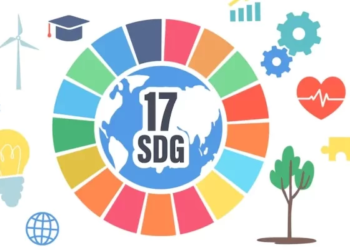Can green energy replace traditional fossil fuels and protect our environment? Green energy comes from sources like solar, wind, and hydro, with no carbon emissions. This opens up a huge future for sustainability. Using solar and wind energy can cut down our need for fossil fuels, helping our planet.
Switching to green energy is good for the planet and our wallets. For example, offices can save up to 25% on energy costs. Even whisky distilleries can cut their carbon footprint by up to 90% by using waste energy. As we need more energy storage, green energy will keep growing, pushing for more sustainable projects everywhere.
Key Takeaways
- Green energy is generated from renewable sources, resulting in zero carbon emissions.
- Relying on renewable power sources can reduce our dependence on fossil fuels, promoting eco-friendly energy practices.
- The use of green energy solutions can lead to significant economic benefits, including reduced energy costs.
- The growth of green energy utilization is expected to drive the development of sustainable and eco-friendly initiatives.
- Investing in renewable energy can generate more jobs than investing in fossil fuels, contributing to a net gain of approximately 9 million jobs.
- The target for achieving net-zero emissions is set for 2050, with the International Renewable Energy Agency estimating that 90% of the world’s electricity should come from renewable energy by then.
- Investment savings from pollution reduction and climate impacts could total up to $4.2 trillion per year by 2030, highlighting the long-term benefits of adopting green energy solutions.
Understanding Green Energy: A Comprehensive Overview
Green energy is made without any carbon emissions, giving it the highest environmental benefit. The science on climate change and cutting down greenhouse gas emissions is clear. As we move towards sustainable energy, knowing the perks of clean energy and alternative sources is key.
Traditional energy sources harm the environment a lot, with fossil fuels leading to climate change. On the other hand, green energy like wind and solar power has much lower emissions. The cost of green energy is going down, making it more affordable than fossil fuels as they get rarer.
What Defines Green Energy
Green energy is all about making power with little harm to the environment. Wind farms and solar panels are getting more popular as we switch to clean energy. Other sources like hydroelectric and geothermal power also help us use less fossil fuels.
The Environmental Impact of Traditional vs. Green Energy
Traditional energy sources like fossil fuels really hurt the environment, leading to climate change. But, green energy like wind and solar power has much lower emissions. Switching to green energy is vital for lessening climate change and aiming for a sustainable future.
Key Components of Sustainable Power Generation
Sustainable power generation mixes clean energy tech with alternative sources. The main parts include wind farms, solar panels, hydroelectric power, and geothermal energy. These solutions are getting more important as we move to a low-carbon economy.
The Economic Benefits of Switching to Renewable Power
Switching to green energy is good for the planet and the economy. The International Renewable Energy Agency (IRENA) says using more renewable power sources could add 1.1% to global GDP by 2030. This is about $1.3 trillion, a big economic gain.
In the U.S., the renewable energy sector has created jobs. It has made over 12,000 construction jobs and 1,700 operations and maintenance jobs. These jobs help the economy grow and create jobs.
Eco-friendly energy also saves money. For example, installing solar panels can save from $10,483 in Washington to $30,523 in Massachusetts. Homes also increase in value by about $20 for every dollar saved on energy bills.
This benefits homeowners and helps the economy grow. The U.S. Bureau of Labor Statistics says solar photovoltaic installer jobs will grow by 105% from 2016 to 2026. This makes it one of the fastest-growing jobs in the country.
Green energy also saves money by reducing climate change costs. The Universal Ecological Fund says climate change has cost the U.S. economy about $240 billion per year for the last 10 years. Switching to renewable power sources can help reduce these costs and create a sustainable future.
With the right policies and investments in eco-friendly energy, we can achieve a prosperous economy. This economy will benefit both people and the planet.
Popular Green Energy Solutions for Modern Applications
The world is moving towards a greener future. Many green energy solutions are now available. Solar power and wind energy are becoming more popular because they are clean and don’t harm the environment.
Solar Power Systems
Solar power costs have dropped a lot. Prices have fallen by about 90% in many places. This makes solar power a good choice for people and businesses wanting to use alternative energy.
Wind Energy Technologies
Wind energy is big in the US, making up about 42% of renewable electricity. It’s key in moving to a greener energy mix. Wind energy helps us use less fossil fuels.
Hydroelectric power and geothermal energy are also important. They help make our energy use more sustainable. By choosing these options, we can lower our carbon footprint. This leads to a greener future, thanks to clean energy technology and sustainable solutions.
Smart Integration of Clean Energy Technology
The global renewable energy market is set to grow fast, at 8.4% each year from 2021 to 2028. This is because more people want green energy and renewable power sources. They need eco-friendly energy to cut down on greenhouse gas emissions and fight climate change.
Smart grid technology is key in adding renewable power sources to the grid. It makes energy distribution efficient and reliable. Companies like Siemens and GE are putting a lot into smart grid tech. This can cut down electricity costs by up to 20% for consumers.
Also, battery storage capacity is expected to jump from 9 GW in 2020 to 50 GW by 2025. This will help more green energy sources get integrated.
Using smart grid solutions well can cut greenhouse gas emissions by up to 30% in cities. This makes eco-friendly energy essential for a sustainable future. As we move towards a low-carbon economy, the role of clean energy tech is huge. Its effect on renewable power sources will be big.
Implementing Green Energy in Residential Settings
Homeowners can make a big difference by using sustainable energy at home. A good first step is to do a home energy assessment. This helps find where energy is wasted and suggests the best clean energy options, like solar panels or geothermal systems.
Home Energy Assessment Guidelines
A detailed home energy assessment looks at insulation, windows, and heating and cooling systems. It shows where energy can be saved and if using wind or solar power is possible.
Installation Considerations
When setting up green energy, think about the cost, upkeep, and savings. For instance, solar panels save a lot of energy but cost a lot upfront. Yet, many places offer help to make these systems more affordable.
Maintenance Requirements
Keeping green energy systems in good shape is key. Regular checks and maintenance are needed to keep them working well. By doing this, homeowners can use less fossil fuel and help the environment.
Commercial Applications of Sustainable Energy Solutions
The world is moving towards a greener future, and businesses are leading the way. They’re using green energy to cut down on carbon emissions and help the planet. Solar and wind power are becoming common in offices and factories, saving money and creating jobs.
Green energy in business has many perks. It cuts down on pollution and offers a steady energy supply. Companies that switch to green energy see big savings and get a boost in reputation. In 2023, a record USD 1.8 trillion was invested in clean energy, showing its importance.
Green energy also means more jobs. As companies go green, they need more skilled workers. This boosts the economy and creates opportunities. With a 50% rise in renewable energy capacity in 2023, the future looks bright for green energy in business.
Government Incentives and Support Programs
Many government programs help make sustainable energy more accessible. They aim to get more people and businesses to use clean energy. For example, the Residential Clean Energy Credit gives up to 30% back on clean energy installations from 2022 to 2032.
Federal Tax Credits
The government offers tax breaks for using solar panels, wind turbines, and geothermal systems. These credits can lower the cost of starting to use sustainable energy. The Energy Investment Tax Credit (ITC) also helps by covering a big part of the cost for solar energy systems.
State-Level Initiatives
States have their own plans to boost renewable energy. They set Renewable Portfolio Standards (RPS) to ensure a certain amount of power comes from green sources. This makes it easier for renewable energy to grow. States also give out tax credits, rebates, grants, and loans to support clean energy projects.
Overcoming Common Green Energy Implementation Challenges
Starting green energy projects can be tough. High costs for solar and wind power are a big worry. But, the long-term savings and less pollution make it worth it.
Initial Cost Concerns
High start-up costs scare off many. But, there are government incentives like tax breaks and grants. For example, the U.S. is putting up to $7 billion into clean hydrogen hubs.
Technical Limitations
Issues like storing energy and fitting into the grid are big hurdles. But, new tech like batteries and smart grids are helping. As green energy demand grows, so will the tech to support it.
Infrastructure Requirements
Building the right infrastructure is key. Governments and companies are investing in green energy systems. This includes solar and wind farms. By tackling these issues, we can move towards a greener future.
Future Innovations in Alternative Energy Sources
The world is moving towards sustainable energy solutions fast. Researchers are finding new ways to use clean energy technology. They’re working on alternative energy sources to cut down on fossil fuels.
For example, wind technology is getting a boost. Soon, we’ll see offshore turbines that are 250m tall. This is all set to happen by 2035.
Another cool idea is floating solar panels. They work better than regular solar panels because the water below them cools them down. Companies like Kitemill are also exploring Airborne Wind Energy (AWE). This uses winds at higher altitudes, unlike traditional turbines.
These clean energy technology advancements are key to lowering our carbon footprint. They help us move towards sustainable energy solutions.
New tech like perovskite solar cells and solid-state batteries is also on the rise. They could make renewable energy more efficient and cheaper. This makes it a stronger competitor to fossil fuels.
As we keep moving towards a greener future, expect even more clean energy technology breakthroughs. These will help us use sustainable energy even more effectively.
Conclusion: Embracing a Sustainable Energy Future
The shift to green energy is key for a greener and stronger future. Big companies and countries are making big moves towards renewable power sources. They’re seeing less pollution, saving money, and finding new ways to do things.
Global spending on green energy projects hit $300 billion in 2023, up 25%. Experts predict a 30% growth in the next five years. This shows we’re moving in the right direction.
Working together, we can make a big difference for our planet. We can start by putting solar panels on homes and businesses. We can also use wind, water, and heat from the earth.
With more research, good policies, and teamwork, the future of green energy looks bright. It’s time to take action. Let’s work together to build a better energy future for all.
FAQ
What is green energy?
Green energy, also known as renewable energy, is power that’s good for the planet. It comes from sources like solar, wind, hydroelectric, and geothermal energy.
What are the benefits of using green energy?
Using green energy helps cut down on harmful emissions and air pollution. It also creates jobs and can save money over time.
What are the different types of green energy sources?
The main types include solar power, wind energy, hydroelectric power, geothermal energy, and biofuels.
How can businesses and individuals implement green energy solutions?
Businesses and individuals can use solar panels, wind turbines, or geothermal systems. They can also get help from government programs and use energy-efficient practices.
What challenges do companies face when implementing green energy solutions?
Companies might face high costs, technical issues, and the need for new infrastructure when going green.
What government incentives are available for adopting green energy?
There are tax credits and programs at the federal, state, and local levels. These support the use of renewable energy technologies.
What are some future innovations in alternative energy sources?
We can expect better solar and wind tech, and new renewable energy solutions in the future.





